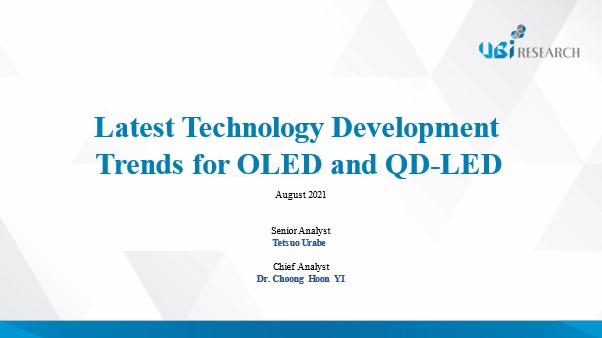OLED, which is
used in premium products for smartphones and TVs, is expanding its market to
the fields of laptop computers and monitors.
However,
smartphones have continued to evolve, and the era of foldable phones has
arrived. Furthermore, by adopting UPC (under display camera) technology, a full
screen display with no holes for the camera was born. In order to make a
foldable OLED or a full screen display, it is necessary to improve the
characteristics of various components and materials that make up the OLED and
to deform the structure of the OLED panel itself.
Various new
technologies have been introduced in large-size OLED for TV. Structural
deformations and high-performance light-emitting materials are used to make
rollable displays and high-brightness TVs.
Nevertheless,
OLEDs continue to evolve to be human-friendly and convenient.
The "Latest
Technology Development Trends for OLED and QD-LED" report published this
time contains the latest technology trends that show the current state of
evolving OLED and the future evolution direction.
In addition, the
latest technological trends related to QD-LED, which is called next-generation
display technology following OLED, are also included in this report. If the LED
itself emits light, it will be a self-luminous device with a wide color gamut,
and since the solution process is possible, the manufacturing cost can be
reduced, so expectations are rising as a next-generation device. 
|